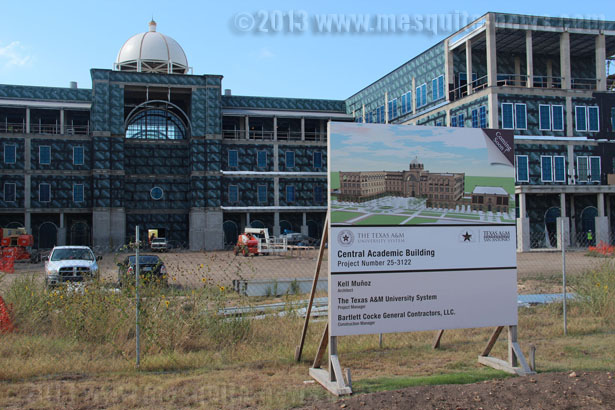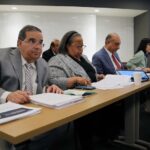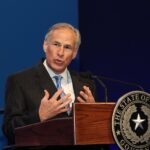
By Jason B. Hogan
There’s a question looming in the minds of administrators and supporters of the Texas A&M-San Antonio campus: without the expected financial support in the form of tuition revenue bonds, how will the campus support a growing student population, especially when it pertains to buildings and facilities?
Student enrollment is on the rise. A year ago, enrollment was approximately 4,120. As of Tuesday, enrollment was 4,519, according to Margarita Vasquez, director of enrollment services. That represents a 9.7 percent increase in enrollment.
If enrollment continues to grow the logical question is where will those students attend classes and what services will the students be lacking without the support of tuition revenue bonds?
During a third special session of the 83rd Texas Legislature, tuition revenue bonds were rejected for Texas institutions for the fourth consecutive term. This year, the TRB discussion was tabled, amounting to seven years since the Legislature approved any state funding for institutional infrastructure.
A&M-San Antonio requested $79 million in the form of a tuition revenue bond for a new science and technology building and central and physical plant.
In a sense, those bonds are loans from the state where the debt is paid for through student tuition. TRB Fact Sheet
SB 10, a bill authored by Sen. Judith Zaffirini, D-Laredo, was proposed for approval by Gov. Rick Perry during this past regular session, and in the third special session of the 83rd Legislature.
But that never came to pass.
Twenty-two congressmen co-authored SB 10; that’s two-thirds of the Senate, Zaffirini said in a Tuesday phone interview. And all of the others were committed to it.
“If the governor would have added it, the bill would have passed,” Zaffirini said. She added there was no reason for him not to add it to the session.
She said Perry claimed, once all legislation was passed he would open up SB 10 for discussion. Based on his demeanor, Zaffirini did not understand why Perry did not add the bill. Through continued discussions leading up to regular session and three governor-requested special sessions, everything seemed copacetic.
There was extensive communication with the governor and his staff, Zaffirini said. Perry guaranteed he would consider the bill only after the 2014-15 state budget was locked in, but, in the end, he reneged.
“Communication was ongoing,” Zaffirini reiterated. “His staff was onboard.”
TRBs cannot be passed until appropriations, or in this case SB 1, meet full approval; that is a longstanding policy during legislative sessions. SB 1 dealt with state budget appropriations for the 2014-15 biennium.
A big financial loss for Texas’ universities
According to Zaffirini, at the center of SB 10 were 63 bonds for 60 institutions across Texas slated for over $2 billion.
The bill lists 60 bonds for 54 institutions across Texas.
A&M-San Antonio was slated to receive $65.8 million for a new science and technology building and an additional $13.2 million for a physical plant totaling $79 million. There was also a $74.2 million request for the University of Texas at San Antonio for an experimental science instructional building.
“That’s a lot of money for the San Antonio area,” Zaffirini said.
There were several variations to SB 10. Different bills had different amounts attached to them, Zaffirini said. She said the final version of the bill was earmarked for $2.810 billion.
Zaffirini is unaware of what Perry’s criteria are, but he does have the power to call special sessions until its passage.
Even before legislators awaited Gov. Perry to add SB 10 to the call list during the third special session, there was SB 16.
SB 16 essentially held the same promises as SB 10 with a difference in the final amount. It was placed on the table during the regular session.
This bill was also sponsored by Zaffirini, as well as Sen. Kel Seliger, R-Amarillo, and Sen. Kevin Eltife, R-Tyler.
The problem was the House and Senate could not agree on the overall amount the bill would cover prior to close of the regular session.
There were four primary arguing points that the House and Senate disagreed upon: the list of included projects, total amount for each system, the total amount allotted for the bill and its methodology.
It originated in the Senate and found passage earmarked at $2.4 billion, said Greg Garcia, assistant VP of governmental relations for A&M-San Antonio.
From there it was sent to the House for their approval. Only, Garcia said the House felt that $2.4 billion was insufficient to every Texas institutions’ individual needs and amended the bill to reflect a $2.7 billion mark.
The difference in the figures were infinitesimal. Garcia said the bill eventually failed due to politics in both the House and Senate, and issues in dollar amounts could have been resolved in a conference committee, a session where members of both houses are present for negotiations.
After the Senate refused to concur with House amendments, they called for the conference committee but House members rejected the offer.
The bill could have been worked out in conference committee, Zaffirini said. Some members in the House believed without agreeing to the conference committee the Senate would be forced to agree to their version of the bill. “Had I have made a motion, the bill would have died,” Zaffirini continued.
“Conference committees are venues where bills are resolved,” she said. It came down to a matter of Gov. Perry adding the bill to call.
There was ample time for the bill’s addition, Zaffirini said, especially during the third special session. He chose not to.
University officials share perspectives
Dr. Maria Hernandez Ferrier, president of A&M-San Antonio, said it was an obvious disappointment not to have any bonds approved.
The university had great hopes that they would be approved, Ferrier said, as science and technology are essential for the campus.
It is fortunate, Ferrier said, that John Sharp, A&M University System chancellor, and the board of regents approved $75 million for the current three buildings under construction.
The overall cost for the Main Campus Building, the inaugural facility at One University Way, was approved at a cost of $40 million. The new Central Academic Building — along with the Patriots’ Casa and theater — scheduled to open in August 2014, measures 170 thousand square feet at a cost of $70 million.
But the university is still deprived of necessary buildings to accommodate growth.
Ferrier said the university does have space; 77 thousand square feet at Brooks City-Base Campus. Ferrier said the university is weighing possibilities and is “going to see if it’s feasible to do a public/private partnership. It’s usually for dorms and not necessary for academic buildings but that’s something we’re looking at.”
All sources interviewed for this story explained the difficulty in acquiring funding for construction projects.
Currently, there aren’t any donors or realized major partnerships, but Dr. Brent Snow, university provost and vice president for academic affairs, advised that the university will over time.
Right now 4,500 students have to contend with each other for the sole multipurpose science laboratory at Main Campus. The physics, chemistry and biology programs are among those who regularly use the lab. This is the state of A&M-San Antonio without the prospect of downward expansion, Snow said, where the university will eventually add freshman and sophomore programs.
Ferrier, as well as other university officials including Snow, remain hopeful the next legislative session will yield different results. The Texas Legislature meets every two years, therefore tuition revenue bonds will not be under consideration again until 2015.
“We are very, very close to our legislators,” Ferrier said. “A large contingent of elected officials at the state level are from Bexar County.” They have promised to double their support, she said.
That contingent is not limited to Bexar County officials, it also includes colleagues from other congressional districts, Ferrier said. Many members have students from their districts attending A&M-San Antonio, Ferrier continued, making them proponents of better education for this university as well.
But Ferrier said the university will go back to the next legislative session in 2015 and ask for the science and technology building.
Initiating Phase II
So, are there any rollover funds the university can use to potentially break ground for the science and technology building?
“Zip, nada,” Snow responded.
According to the A&M-San Antonio development plan, the university broke down construction into three primary phases. Phase II was set to begin following student enrollment surpassing 5,000.
But Snow said that figure was “kind of a rough estimate. There’s nothing magic about it.” Although it does point out the need for more construction, he continued.
Snow likened campus construction at A&M-San Antonio to the old adage ‘If you build it, they will come.’ But the university is operating in reverse: “They’ll come, now you better build it,” Snow said.
A better future ahead?
With the close of the 83rd legislative session and position jockeying looming for state officials prior to the start of 84th session, Zaffirini said it is unknown what the future holds for state-led funding at Texas institutions.
There will be a new governor no matter how you slice it. Perry is the longest-serving governor in Texas history, but during a July 8 speech in San Antonio he announced that he would not seek re-election to a fourth term in 2014. Perry has been governor since 2000. Texas rejected term limits for statewide officials, including the governor, following a 61-80 House vote opposing the proposal. No one but Perry knows where his future aspirations will take him.
Joe Straus, current Speaker of the Texas House of Representatives, will run again, Zaffirini said. But the next Texas governor is up in the air.
Ever since the 11-hour filibuster during the first special session of this legislative season by Sen. Wendy Davis, D-Fort Worth, decrying the anti-abortion proposal, which has since passed, the state’s Democratic Party have now steered their hopes for governor on her. Their rallying cry even extends to a ‘I Want Wendy’ campaign, which as of this publication date has received 46,527 Facebook likes.
But Zaffirini still has her hopes and fears, all the same.
“What if the new governor says, ‘If you pass a TRB bill, I will veto it,’” Zaffirini said. “It’s a matter of who’s the next governor.”





